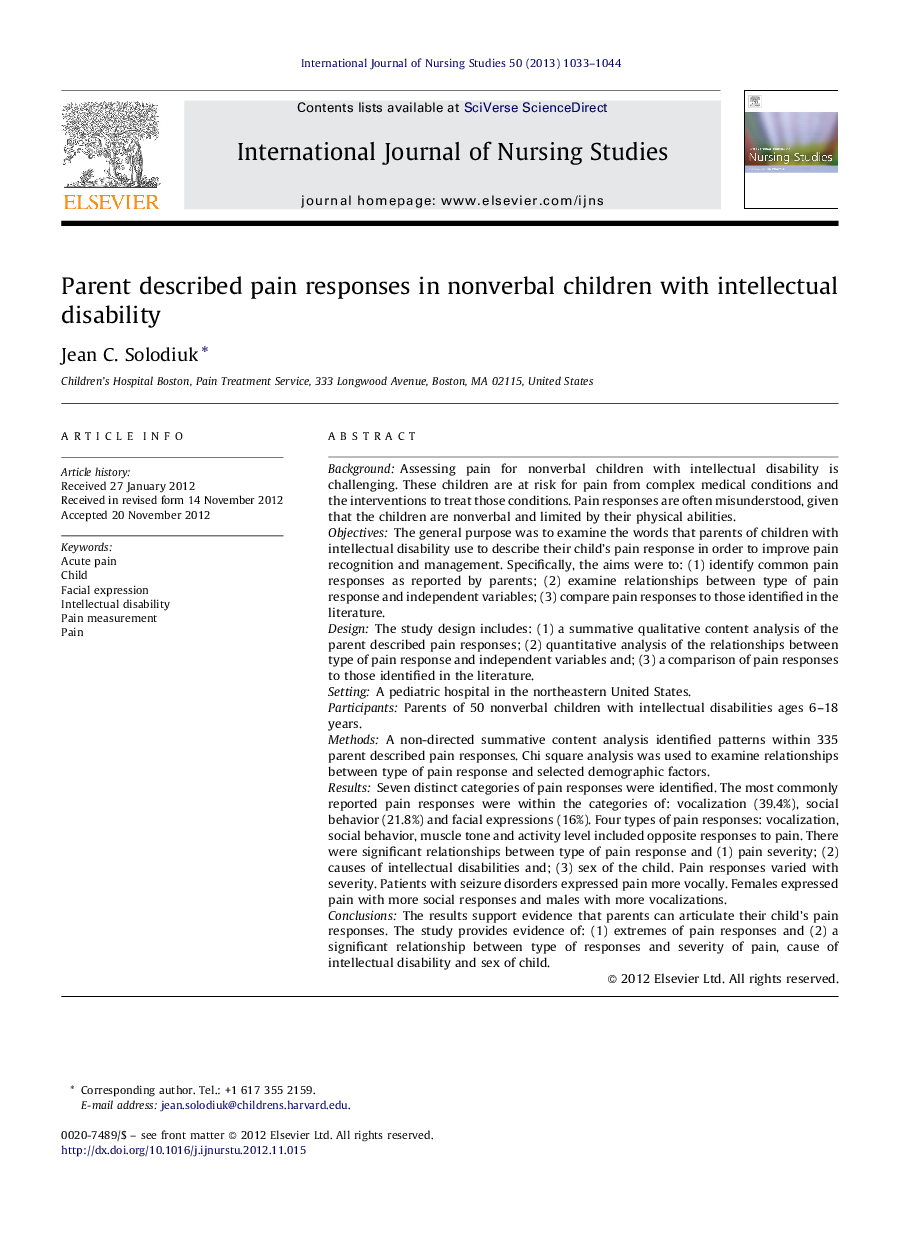| کد مقاله | کد نشریه | سال انتشار | مقاله انگلیسی | نسخه تمام متن |
|---|---|---|---|---|
| 1076292 | 1486545 | 2013 | 12 صفحه PDF | دانلود رایگان |

BackgroundAssessing pain for nonverbal children with intellectual disability is challenging. These children are at risk for pain from complex medical conditions and the interventions to treat those conditions. Pain responses are often misunderstood, given that the children are nonverbal and limited by their physical abilities.ObjectivesThe general purpose was to examine the words that parents of children with intellectual disability use to describe their child's pain response in order to improve pain recognition and management. Specifically, the aims were to: (1) identify common pain responses as reported by parents; (2) examine relationships between type of pain response and independent variables; (3) compare pain responses to those identified in the literature.DesignThe study design includes: (1) a summative qualitative content analysis of the parent described pain responses; (2) quantitative analysis of the relationships between type of pain response and independent variables and; (3) a comparison of pain responses to those identified in the literature.SettingA pediatric hospital in the northeastern United States.ParticipantsParents of 50 nonverbal children with intellectual disabilities ages 6–18 years.MethodsA non-directed summative content analysis identified patterns within 335 parent described pain responses. Chi square analysis was used to examine relationships between type of pain response and selected demographic factors.ResultsSeven distinct categories of pain responses were identified. The most commonly reported pain responses were within the categories of: vocalization (39.4%), social behavior (21.8%) and facial expressions (16%). Four types of pain responses: vocalization, social behavior, muscle tone and activity level included opposite responses to pain. There were significant relationships between type of pain response and (1) pain severity; (2) causes of intellectual disabilities and; (3) sex of the child. Pain responses varied with severity. Patients with seizure disorders expressed pain more vocally. Females expressed pain with more social responses and males with more vocalizations.ConclusionsThe results support evidence that parents can articulate their child's pain responses. The study provides evidence of: (1) extremes of pain responses and (2) a significant relationship between type of responses and severity of pain, cause of intellectual disability and sex of child.
Journal: International Journal of Nursing Studies - Volume 50, Issue 8, August 2013, Pages 1033–1044